Visiting Researchers
Prof. Dr. Kerem Öktem (Ca’ Foscari University of Venice, Political Science and International Relations)
Concrete Empire: Turkey’s Cultural-Religious Foreign Policy in Southeast Europe
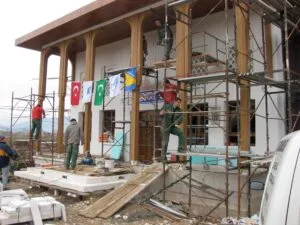
The restoration of Ottoman monuments and the construction of representative grand mosques, often in a historicizing Ottoman-Seljuk style and on an impressive scale, has now long been a central component of Turkey’s cultural-religious foreign policy on a global scale. In Southeast Europe, several representative grand mosques are being built by Turkish contractors in Albania, North Macedonia, Kosovo, and Cyprus. These projects not only compete with the construction of churches by Catholic and Orthodox communities but occasionally also with initiatives from other Islamic countries and organizations. The research project “Concrete Empire” examines the implementation and reception of Turkey’s recent foreign policy in the Balkans, with a particular focus on the construction and restoration of these religious infrastructures. Within the framework of “Concrete Empire” –where the term “concrete” stands both for the building material concrete, used generously in these grand projects, and for “concrete” in the sense of a “concretization of imperial ideas”– I engage with the actors of this foreign policy and their interpretations regarding these religious architectural structures. The central question is to what extent the presence of representative mosques in Ottoman-Seljuk style establishes connections of meaning between Turkey and the Balkans, as well as between the post-socialist present and the Ottoman past. These connections seem to render the Balkan space more readable for the actors of Turkish foreign policy. I am particularly interested in understanding how affective spatiotemporal continuities emerge, leading to a blurring of existing national and contextual boundaries in the perception especially of Turkish actors. In the context of debates about Turkey as a “neo-Ottoman” or “neo-imperial” power, I am also interested in the reception of this foreign policy perspective in the aforementioned countries. The question arises as to whether and among which actors this foreign policy resonates and how it influences existing conflict lines and experiences of exclusion, especially within the Muslim communities in the region. Finally, I seek to show how the case study of mosque-building in the Balkans demonstrates the extent to which, in the last two decades, Turkish foreign policy has taken on a more religiously orientated, and more imperially-minded form.
Dr. Sena Hatip Dinçyürek
The European Recipients of the Order of Mercy (Şefkat Nişânı), A Study of Prosopography
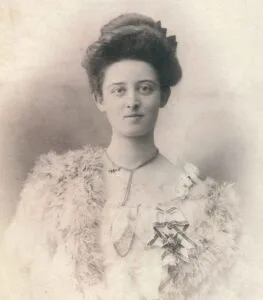
The Order of Mercy (Şefkat Nişanı, the Order of Chefakat) was the first Ottoman imperial order instituted specifically for women by Sultan Abdülhamid II in 1878. It was originally created to honour women for their charitable work and services in the Ottoman Empire. The very first Order of Mercy was given to the wife of the British ambassador, Lady Enid Layard, in 1878; as a recognition of her relief efforts for Ottoman war refugees. However, soon after, this imperial order was conferred mainly to prominent European women – along with Ottoman ladies –for their charitable services in the empire or in recognition of their status in the society or in the diplomatic circles.
Today, even cursory research in the Ottoman Archives provides us with a number of names and records of European ladies who were bestowed with the Şefkat Nişanı. They form the primary focus of this project. This includes female relatives of members of the diplomatic corps serving in Ottoman lands, prominent members of the European community who lived in Turkey or temporarily visited the country, but also some without any personal connection to the Ottoman Empire who were deemed important enough to be given a decoration by the Sultan. Apparently, these ladies played a significant role in the European-Ottoman relations in the late nineteenth and early twentieth centuries. Hence, the project takes a prosopographical approach to their individual stories in order to reveal their potentially existing connections with each other, and their role both in the Ottoman and their native societies. These foreign ladies were in any way part of late Ottoman History; compiling their collective biography with a special emphasis on their bestowment with the Order of Mercy will contribute to the diplomatic and social histories of the countriesinvolved .
Gülay Yılmaz, Associate Professor (Akdeniz Üniversity, Department of History)
The Devshirme System of the Ottoman Empire, 1450-1650
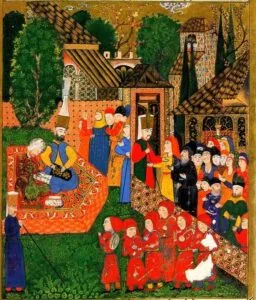
The goal of this project is to produce an authoritative scholarly monograph on the devshirme, a system of slavery that was crucial to the formation of the Ottoman Empire, yet remains insufficiently understood. For centuries, the Ottomans levied children from the Christian population of the Empire. These children were converted to Islam, educated and taught Turkish, and eventually placed in administrative and military posts. Accounts of the devshirme institution by Ottoman historians have focused predominantly on Ottoman statesmen of devshirme origin, or the most famous “end product” of the slavery regime, the janissary army. Instead, the current project will shift the attention to imperial politics of recruitment, its connection with the ruling methods in the Balkans, and to the children and youth caught up in these politics. It will examine the agency of these overlooked historical actors, analyze the embodied experiences of this institution of slavery as both an Ottoman phenomenon and as part of contemporary global forced labor regimes. This project will employ underutilized archival records, such as the unique levy register of 1603-4, salary registers, narrative sources, as well as miniatures to provide a critical account of the devshirme system from the mid-fifteenth century up to its demise in the mid-seventeenth century.
Simone Salmon, PhD Candidate in Ethnomusicology (University of California, Los Angeles)
Yaşa! Diversity, Place, and Memory in Turkish Jewish Music
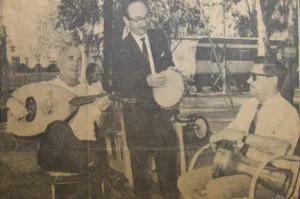
Simone Salmon’s dissertation explores the state of Jewish music amid a climate of Turkish ethnonationalism that leaves Jews envisioning modern Spain as a new homeland to invoke their imagined memory of ancient Sefarad. She compares the Turkish experience to the experience of members of the Los Angeles Turkish-Jewish diaspora that look not only to ancient Spain but also to the Ottoman Empire as their homelands.
Istanbul Jews navigate a porous divide between tacitly supporting the reigning party and voting swiftly against it. The Chief Rabbinate cooperates with Turkish officials of the Justice and Development Party (AKP), while Istanbul’s Jewish museum boasts gratitude to the country for giving its Jews a safe homeland. With antisemitism increasing, this tension is compounded by most public-facing Jewish events relying on government funding to show pride for the country’s “colorful cultural mosaic”. This precarity has left some local Jewish musicians looking to Spain as a new homeland to replace what increasingly feels like a host country while immigrating Jewish musicians look to Istanbul as a hostland to escape the horrors of the Russia-Ukraine war.
For Turkish-born Sephardim and the Los Angeles diaspora, this replacement is restorative—a return to Sefarad—reflected in opposed musical styles among the Istanbul and Los Angeles counterparts that illustrate the ambiguity of their identities as Western or Eastern and ancient or modern people. In addition, access to a Spanish passport provides Turkish Jews the tools to escape an economic crisis that worsens at near-exponential rates. This dissertation considers the implications of music-making by members of Turkey’s minority population at a time when national belonging is contingent not on legal citizenship but upon the eye of the beholder while investigating the powerful pull of nostalgia that relies on music to bend the barriers of time, space, and collective memory for Jews in Turkey and the United States.
Audrey Wozniak, M.A. (Harvard University)
A Discipline for the Nation: Turkish Classical Music Choirs in History and Practice
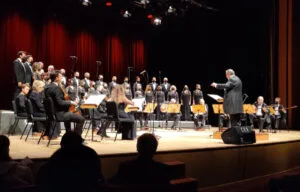
My research project is concerned with an extraordinary but overlooked musical phenomenon in Turkish classical music that emerged in tandem with the establishment of the Turkish Republic by Mustafa Kemal Ataturk in 1923: the formation of many state-run and amateur choirs throughout the new Republic, which also entailed a fundamental shift in the musical genre and performance practice. My central argument is that seemingly extramusical social and political during the decline of the Ottoman Empire and in the burgeoning Turkish Republic were reflected in these emerging Turkish classical music choirs, which prove to be valuable sociocultural microcosms within which anxieties and contentions over (individual and national) identity play out in rehearsal and performance practices.
Using ethnographic and archival research methods, my work traces the historical phenomenon of the choir as an ensemble format in Turkish classical music over the course of the last century as well its widespread present manifestations in Turkish and diasporic urban contexts. My project is the first to center Turkish classical music choirs as sites in which contestations of “Turkishness” and concerns about political, cultural, social values continue to be performed. I aim for my work of documenting the cultural and political significance of Turkish classical music to have long-term national and international impacts by demonstrating how a manifestation of Turkish cultural heritage has meaning for Turkish citizens and Turks around the world.
Doctoral Scholarship
Maysa Albert (Ludwig-Maximilians Universität München)
Seen from the Edge: Istanbul’s Last 100 Years from the Perspective of Its Peripheries
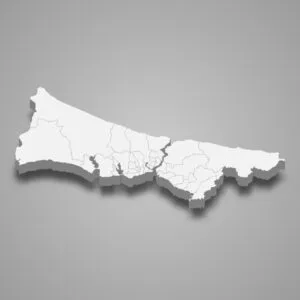
This project is centered around a compelling proposition – the imperative to rethink and retheorize the intricate interplay between urban centres and peripheries, as well as the concept of the “periphery” itself.
The objective is to explore urban patterns and elements from a historical perspective, focusing on three distinct peripheries of Istanbul – Alibeyköy, Beykoz, and the land walls – analyzing the shifting discourses within them, connecting social dynamics and physical aspects, forging connections between social dynamics and physical aspects in the context of a global city. By connecting social dynamics and physical aspects within the context of a global city, this project aims to identify spatial and discursive transformations and gain insight into Istanbul’s history from the perspective of its margins, uncovering the city’s power relations.
To accomplish this, the research will thoroughly examine various criteria, including accessibility, economic flows, infrastructure, and population structure, to elucidate the hybridity that arises from urban public spaces. This hybridity blurs the traditional boundaries between centers and peripheries, thus emphasizing the flexible and dynamic nature underlying conventional urban design concepts.
The outcomes of this project will be presented in the form of customized, web-based maps that allow for essential statistical analyses. Additionally, the project will employ story maps to detail the events, issues, trends, and patterns concerning the identified peripheries, drawing from a vast collection of geodata accessible 24/7.
By exploring the complexities of Istanbul’s peripheries and their development over the last century, this research strives to contribute to the broader academic discourse on urban studies. The project’s emphasis on the significance of peripheries in shaping power structures will shed light on previously understudied aspects of Istanbul’s urban history, leading to a more nuanced understanding of urban development.
Burcu Yaşin (Concordia University, Montreal)
Volume Up, Volume Down: Sonic Gentrification and the Tuning of Romani Music in Turkey

This project traces the sonic impacts of gentrification. Gentrification continues to be a global problem in today’s cities. Irrespective of geographies and cultures, it mostly impacts vulnerable communities. Displacements affect these communities’ livelihoods, social networks, and economies, causing further marginalization in everyday life. Only recently scholars have begun to address the impacts of gentrification on local cultures and artistic practices, mainly focusing on their disappearance and subsequent replacement. However, gentrification may lead to homogenization of both local culture and space without necessarily eliminating cultural practices. Space, in fact, is particularly important for music cultures relying on informal learning, community-oriented performance, non-notational systems, and improvisation. Massive spatial transformations in the urban realm due to gentrification, instead of simply causing the disappearance of such practices, therefore engenders radical change in music cultures worth being examined in depth.
My project aims at answering the question of how government-sponsored urban policies impact and homogenize marginalized music cultures, with a specific focus on Turkish Romanies. The project addresses three main issues overlooked in the existing literature: (a) the connection between urban politics and marginalized music cultures, (b) the impact of gentrification on music performance and knowledge transmission, and (c) the homogenization of music styles and practices due to the spatial transformation. To analyze these issues in depth, my project elaborates on the concepts of acoustemology (sonic way of knowing connected to the everyday), atmospheres, and sonic gentrification, while combining several research methodologies such as archival research, oral history, and sensory ethnography.
Berkay Uluç (University of Michigan, Comparative Literature)
Translingual Ottoman Modernity: Texts, Concepts, and Media
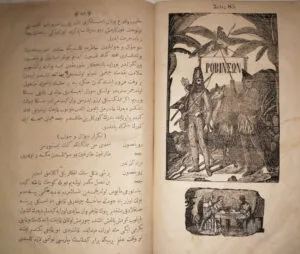
With translation as its focal point, my project argues that understanding Ottoman modernity requires one to particularly attend to but also necessarily go beyond Turkish-Arabic cultural contact. In so doing, it situates the late nineteenth- and early twentieth-century connections and contestations between Turkish and Arabic within the larger context of multilingual, multiscript, and multimedial interactions within the Ottoman Empire and between the empire and Europe. Shaped around four themes—namely, “history,” “language,” “literature,” and “aesthetics”—my project draws on a set of archival sources from legal proclamations to philosophical treatises to translated literature to illustrated journals. Documenting Ottoman modernity through and beyond Turkish-Arabic contact, these archival registers embody a wide variety of translation practices between “native” and “foreign” languages, scripts, and media in their material structures as well as between “classical” and “modern” epistemologies, genres, and vocabularies in their conceptual universes. One case study I am working on is Hikâye-i Robenson—Ahmed Lutfi’s 1864 Arabic-to-Turkish translation of Robinson Crusoe, which is canonically considered the first novel in English. Accompanying the Perso-Arabic script of Ottoman Turkish in the 1869 edition of Hikâye-i Robenson is a series of visual and textual elements copied from a Greek translation of the novel, including those revealing the power relations between the protagonist and his “servant” Friday. Using the methods of comparative literature, translation studies, and book history to analyze such “translingual” marks born by the texts of late Turkish-Arabic contact—materially, upon the page, and conceptually, in their content—I offer to explore Ottoman modernity in its hegemonic and heterogeneous facets at once. While standing at the intersection of critical Ottoman studies and critical translation studies, my project also aspires to benefit from and contribute to theoretical frameworks such as world literature, postcolonial studies, queer studies, and aesthetics and politics.